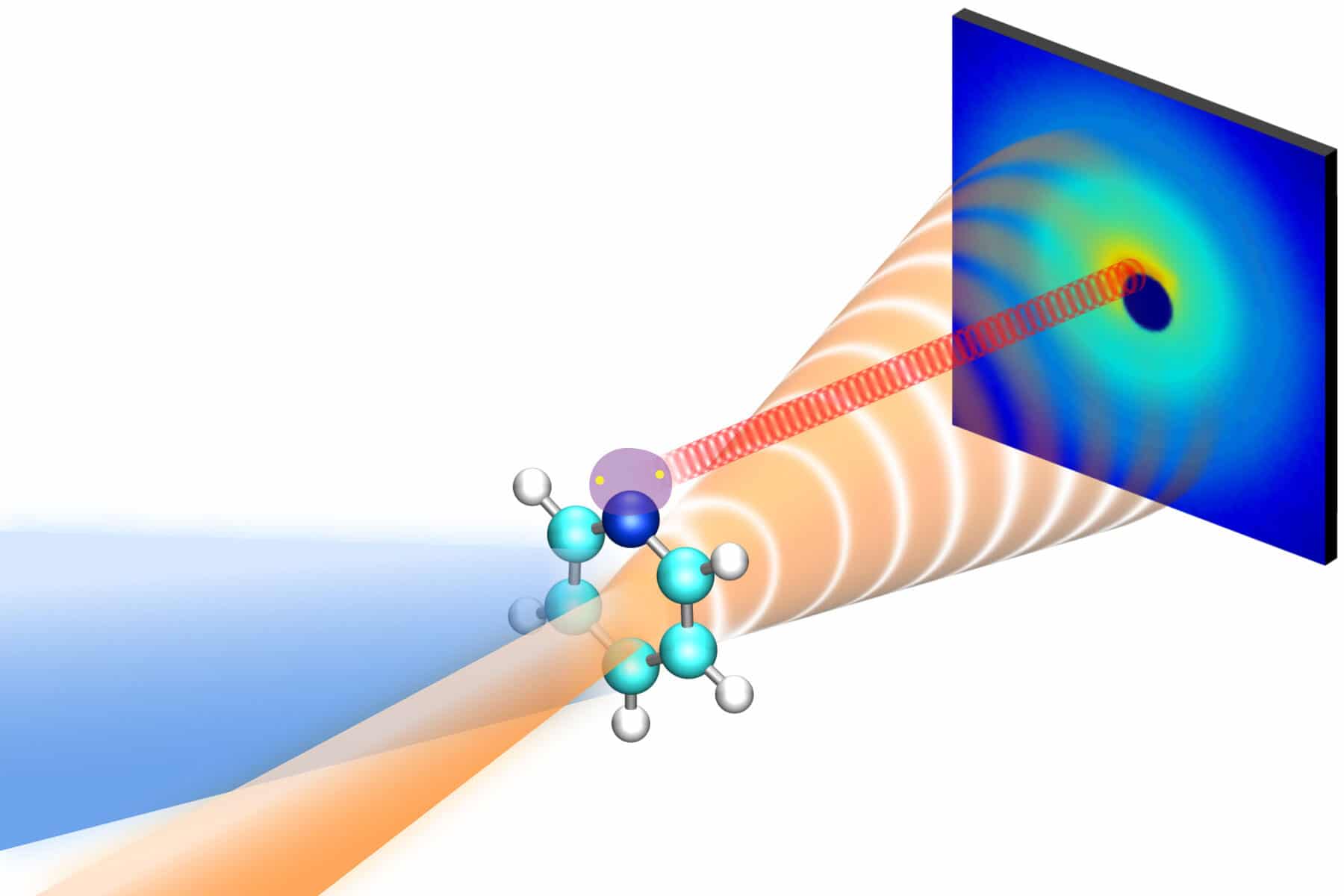Scientists, for the first time- captured the movements of electrons and nuclei in a molecule after it was excited with light- just by using a high-speed electron camera. They have shown that with ultrafast electron diffraction, it’s possible to follow electronic and nuclear changes while naturally disentangling the two components.
In this study, scientists from Stanford University were able to see both the exact positions of the atoms and the electronic information at the same time.
The technique is expected to offer a precise picture of molecules’ behavior while quantifying aspects of electronic behaviors that are at the heart of quantum chemistry simulations. This could provide a new basis for future theoretical and computational methods.
Scientists flashed laser light into a gas of pyridine molecules. They then blasted the energized molecules with a short pulse of high-energy electrons, generating snapshots of their quickly rearranging electrons and atomic nuclei that can be hung together into a stop-motion film of the light-induced fundamental changes in the sample.
Doing so generated elastic scattering signals- when electrons diffract off a pyridine molecule without absorbing energy. This also encoded information about the nuclear behavior of the molecules, while inelastic scattering signals, produced when electrons exchange energy with the molecule, contained information about electronic changes.
Electrons from these two sorts of scattering developed at various points, permitting analysts to isolate the two signals neatly and legitimately see what the particle’s electrons and nuclei were doing simultaneously.
Co-author Xiaolei Zhu, who was a postdoctoral fellow at Stanford at the time of this experiment, said, “Both of these observations agree almost precisely with a simulation that is designed to take into account all possible reaction channels. This provides us with a clear view of the interplay between electronic and nuclear changes.”
Scientists noted, “This method will supplement the range of structural information collected through X-ray diffraction and other techniques at instruments such as SLAC’s Linac Coherent Light Source (LCLS) X-ray laser, which can measure precise details of the chemical dynamics on the shortest timescales, as recently reported for another light-induced chemical reaction.”
Co-author and SLAC scientist Thomas Wolf said, “We’re seeing that MeV-UED is becoming more and more of a tool that complements other techniques. The fact that we can get electronic and nuclear structures in the same data set, measured together yet observed separately, will provide new opportunities to combine what we learn with knowledge from other experiments.”
Journal Reference
- Jie Yang, et al., Simultaneous observation of nuclear and electronic dynamics by ultrafast electron diffraction. SCIENCE 22 May 2020 Vol 368, Issue 6493 pp. 885-889 DOI: 10.1126/science.abb2235
